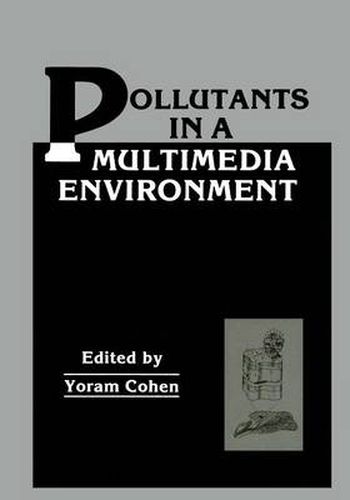Readings Newsletter
Become a Readings Member to make your shopping experience even easier.
Sign in or sign up for free!
You’re not far away from qualifying for FREE standard shipping within Australia
You’ve qualified for FREE standard shipping within Australia
The cart is loading…






This title is printed to order. This book may have been self-published. If so, we cannot guarantee the quality of the content. In the main most books will have gone through the editing process however some may not. We therefore suggest that you be aware of this before ordering this book. If in doubt check either the author or publisher’s details as we are unable to accept any returns unless they are faulty. Please contact us if you have any questions.
Pollutants released to the environment are distributed among the many environmental media such as air, water, soil, and vegetation, as the result of complex physical, chemical and biological processes. The possible environmental impact associated with chemical pollutants is related to their concentration levels and persistence in the various environmental compartments. Therefore, information regarding the migration of pollutants across environmental phase boundaries (eg., air-water, soil-water) and their accumulation in the environment is essential if we are to assess the potential environmental impact and the associated risks. In recent years it has become apparent that environmental pollution is a multimedia problem. Risk assessment and the design of appropriate pollution control measures require that we carefully consider the transport and accumulation of pollutants in the environment. We are now recognizing that the environment must be considered as a whole, and the scientific and regulatory approaches must consider the interactions of environmental media. It is also becoming apparent that single-medium approaches are partial and often counter-productive. On the other hand any multimedia program must carefully consider the rate of each environmental medium in the overall multimedia scheme.
$9.00 standard shipping within Australia
FREE standard shipping within Australia for orders over $100.00
Express & International shipping calculated at checkout
This title is printed to order. This book may have been self-published. If so, we cannot guarantee the quality of the content. In the main most books will have gone through the editing process however some may not. We therefore suggest that you be aware of this before ordering this book. If in doubt check either the author or publisher’s details as we are unable to accept any returns unless they are faulty. Please contact us if you have any questions.
Pollutants released to the environment are distributed among the many environmental media such as air, water, soil, and vegetation, as the result of complex physical, chemical and biological processes. The possible environmental impact associated with chemical pollutants is related to their concentration levels and persistence in the various environmental compartments. Therefore, information regarding the migration of pollutants across environmental phase boundaries (eg., air-water, soil-water) and their accumulation in the environment is essential if we are to assess the potential environmental impact and the associated risks. In recent years it has become apparent that environmental pollution is a multimedia problem. Risk assessment and the design of appropriate pollution control measures require that we carefully consider the transport and accumulation of pollutants in the environment. We are now recognizing that the environment must be considered as a whole, and the scientific and regulatory approaches must consider the interactions of environmental media. It is also becoming apparent that single-medium approaches are partial and often counter-productive. On the other hand any multimedia program must carefully consider the rate of each environmental medium in the overall multimedia scheme.